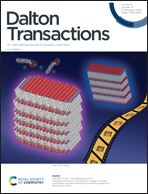Mapping boron catalysis onto a phosphorus cluster platform†
Abstract
Clusters of main group elements, such as phosphorus, arsenic, germanium, and tin – called Zintl clusters – have been known for more than a century. However, their application in main group catalysis is largely unknown. Here, we tether boranes to a seven-atom phosphorus cluster ({C8H14}BCH2CH2SiMe2)3P7 (2) and we demonstrate Lewis acid catalysis as proof-of-principle that boron chemistry can be mapped onto clusters using this method. Catalyst 2 was employed to mediate key organic transformations, including the hydroboration of carbodiimides, isocyanates, ketones, alkenes, alkynes, and nitriles. To the best of our knowledge, this is the first application of Zintl-based clusters as an innocent platform in metal-free catalysis. By chaining boron, its treasure chest of chemistry can be unlocked at these clusters. Hence, beyond catalysis this method could find applications for main group clusters in neutron capture therapy, stimuli responsive materials, and cross-coupling, and frustrated Lewis pair and functional polymer chemistries.



 Please wait while we load your content...
Please wait while we load your content...